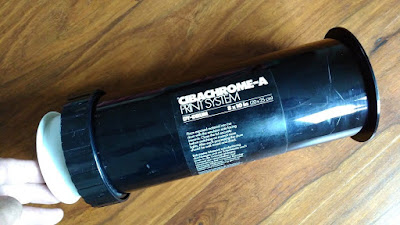Lith Lith

No I'm not being redundant. Introduction I was experimenting with making contact prints for some masking I want to try. Along the way I wandered into using lith film and then got led to Lith paper developer as I tried to achieve more contrast. This gave me some interesting results in their own artist way. I ended up making a lith print on lith film. The tons are wonderful and I have always liked the way a transparency lies on a sheet of white paper and looks somehow very different than a print. I am not it will translate well online but here it is. I have tried to match the exposure and color from the original. f8 45 sec exposure I went for a extra stop of exposure and got this. This has lower contrast and greener color to it. f5.6 45 sec exposure Here they are all photographed together (daylight light source) along with a version developed on the lith film with Moersch Eco4812 conventional print developer on the left. Displaying Transparencies When displayi





